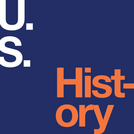
This excerpt from WGBH's Evening Compass news program summarizes events of the first year of the 1974 Boston school desegregation plan. [3:33]
- Subject:
- Social Studies
- Material Type:
- Audio/Video
- Provider:
- PBS LearningMedia
- Date Added:
- 12/01/2022

This excerpt from WGBH's Evening Compass news program summarizes events of the first year of the 1974 Boston school desegregation plan. [3:33]

This collection uses primary sources to explore school desegregation in Boston. Digital Public Library of America Primary Source Sets are designed to help students develop their critical thinking skills and draw diverse material from libraries, archives, and museums across the United States. Each set includes an overview, ten to fifteen primary sources, links to related resources, and a teaching guide. These sets were created and reviewed by the teachers on the DPLA's Education Advisory Committee.

In this transcript of an interview for Eyes on the Prize, Vanessa Venable describes the impact of school closings in Prince Edward County, Virginia, from 1959-1964.

Read a brief overview of the history behind this executive order that integrated the segregated military and then read a copy of the complete original text.

This flyer from the 1962 Birmingham selective buying campaign encourages African Americans to boycott discriminatory businesses; from the Birmingham Civil Rights Institute.

In this interactive lesson, students take a closer look at some of the women who risked their lives to fight against systemic racism in the United States during the Progressive Era.

[Free Registration/Login Required] A lesson plan that teaches about nonviolence and uses the civil rights lunch counter protests as examples.

The Greensboro Sit-In was a critical turning point in Black history and American history, bringing the fight for civil rights to the national stage. Its use of nonviolence inspired the Freedom Riders and others to take up the cause of integration in the South, furthering the cause of equal rights in the United States.

Point/counterpoint commentary on the president's actions after the Brown ruling; from American Experience: "Eisenhower." [6:32]

This lesson deals with the emergence of the blues as a form of popular music on the radio, beginning in Helena, Arkansas in 1940. Students will understand and discuss the relationship between technological and social change, discuss how the popularity of the blues spread as a result of radio, and analyze and discuss how music can be a tool for desegregation and cultural understanding.

PBS always provides an excellent website! This time they turn their attention to the famous Brown case. Site presents educational photos and narrative about the long road to Brown and the long road ahead.

Students explore the structure of the American government, the three branches of government, the history of women's suffrage, and read biographies about famous Americans who fought for change.

From the Smithsonian Institution's National Museum of American History, this exhibition on Brown v. Board of Education shows much of the struggle of the Civil Rights era, not only to achieve equality in educational opportunities but to achieve equality in all realms of American life.

This segment from American Experience: "Simple Justice" captures the legal issues and opening arguments in Brown v. Board of Education. [6:44]

From Debbie Levy: "Today, Jo Ann will be the first to remind you that she is just one of twelve black students who went through the agonizing experience of desegregating Clinton High School. She'll make sure you know that because of her parents' decision to leave, she spent only one semester there. The heroes, she'll say, are Bobby Cain and Gail Ann Epps - the ones who hung in there long enough to graduate despite the danger and discomfort of showing up, day after day, to a place where they knew they were not wanted. I say they are all heroes."

From Debbie Levy:"Today, Jo Ann will be the first to remind you that she is just one of twelve black students who went through the agonizing experience of desegregating Clinton High School. She'll make sure you know that because of her parents' decision to leave, she spent only one semester there. The heroes, she'll say, are Bobby Cain and Gail Ann Epps - the ones who hung in there long enough to graduate despite the danger and discomfort of showing up, day after day, to a place where they knew they were not wanted. I say they are all heroes."

An article celebrating the 50th anniversary of the famous Brown v. Board Supreme Court decision. Features background information, a timeline of integration of schools, interviews, and links to many other activities and resources covering the topics of racism, bullying, and tolerance.

U.S. History is designed to meet the scope and sequence requirements of most introductory courses. The text provides a balanced approach to U.S. history, considering the people, events, and ideas that have shaped the United States from both the top down (politics, economics, diplomacy) and bottom up (eyewitness accounts, lived experience). U.S. History covers key forces that form the American experience, with particular attention to issues of race, class, and gender.Senior Contributing AuthorsP. Scott Corbett, Ventura CollegeVolker Janssen, California State University, FullertonJohn M. Lund, Keene State CollegeTodd Pfannestiel, Clarion UniversityPaul Vickery, Oral Roberts UniversitySylvie Waskiewicz


By the end of this section, you will be able to:
Explain how Presidents Truman and Eisenhower addressed civil rights issues
Discuss efforts by African Americans to end discrimination and segregation
Describe southern whites’ response to the civil rights movement